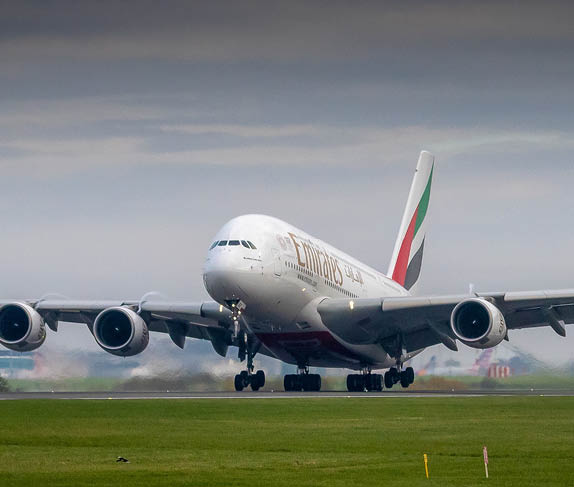Although there have been record quarterly results from US airlines and airline stocks are riding high, American has recently announced delays to its 787s and Virgin America has pulled its share offering, and so one wonders if the only way for the US Global Jets ETF (JETS) is down when it opens this week?
We reported on the launch of this ETF back in January in some detail so I will not go over old ground, but it is well worth considering this exciting ETF so long as the mix is going to be sexy. Potential investors will be on the lookout for airline shares such as Spring to have a strong showing in the mix along with those airlines with exposure to the US/Mexican market along with Ryanair and IAG where potential for further quarterly gains are exceptionally high, but it is a shame that this ETF was not launched some four months ago when it could have benefited from a great head-start on United, American, Southwest, Alaska, IAG, Ryanair… (the list goes on and on). The aviation sector needs a large scale ETF in the market doing well as a reference point that will assist in attracting new investment. Let’s hope this is it; but, as we saw with the Guggenheim ETF, very impressive returns are no guarantee that the ETF will attract enough investors.
Has the airline industry really attracted the attention of, and gained the trust of, a wide ranging base of potential investors from small spare time individuals to institutional giants? The JETS ETF might well assist us in answering that question.
Meanwhile following on from the feature written here last week regarding Skymark, we have an update on the situation:
As you are no doubt aware – Skymark, Integral Corporation and ANA Holdings have agreed on the details of the joint sponsorship of the troubled airline in a new memorandum of understanding (MOU). Under the terms of the agreement, Integral and ANA have agreed to support Skymark with a further capital injection of ¥18bn (approximately $150 million) by the two firms, after which Integral will then own 50.1% of the airline, with ANA holding 19.1%. The balance will be allocated and/or sold to other investors “to be determined later”, while the current equity holders will be eradicated.
Now at this point it is worth pondering on the investment record of Integral. It has never attempted anything anywhere close to the scale of this investment and one wonders why take-on the Skymark mess as the big step-up? Is Integral onto a sure thing in this investment in partnership with ANA? Its management must think so – refer back to my comments of last week – Integral stands to gain from the Skymark slot assets but they have to be very careful as Japan Airlines (JAL) and the regulators are watching.
Skymark is also planning to execute commitment lines with financial institutions with the support of Integral and ANA to ensure that Skymark has the necessary working capital for its business operations.
At the end of March, it was revealed that Airbus Group is demanding Skymark pay $700 million in compensation for cancelling its A380 order. The bankrupt airline has $1.7bn in liabilities to contend with, which has increased significantly since it filed for bankruptcy protection on January 28.
Skymark, Integral and ANA have agreed to work together to develop a restructuring plan for the airline. ANA and Integral are confident in the airline’s resurgence and have stated that they hope to re-list their shares on the stock market within in the next five years.
After the acceptance of the proposed rehabilitation plan, Skymark’s six member board will be comprised of three individuals appointed by Integral, one from ANA and the remaining two positions will be decided on after discussions between Integral, ANA and other contributors. One of the directors appointed by Integral is expected to become the Chairman, while one of the directors appointed by ANA or other shareholders will be the President.
Integral initially agreed to basic rehabilitation support for Skymark on February 5, 2014, and ANA was brought on board following the airline’s appointment of GCA Savvian Corporation as its financial adviser, which was ordered to broadly solicit and select sponsors who would be willing to support Skymark in its attempt to maintain and develop the value of Skymark’s business.
Skymark was awarded “new entrant” slots at Tokyo Haneda Airport to spur competition with JAL and ANA. To protect against the slots simply being sold on to JAL and ANA or their affiliates, the slot agreements were written with a provision that if a new entrant holding the slots was sold/acquired past a 20% threshold then the incremental slots would be returned for re-allocation to other legitimate “new entrants”. For this reason ANA is not able to exceed 20% ownership of Skymark under any circumstances, hence its restrictions in the latest agreement to take a 19.1% stake.
ANA’s investment in Skymark is no surprise given that JAL is prevented from investing in any other carrier under the terms of its bankruptcy agreement until 2017, which really left only one obvious major player. Integral’s involvement is more difficult to have foreseen especially since this deal is the company’s most sizeable equity investment to date. Prior to Skymark, Integral’s largest, recent deal was a ¥10bn (US86.6 million) investment in QB Net, a hair salon in December 2014.
ANA’s involvement in Skymark mirrors its past deals with Air DO, Solaseed and Starflyer, specifically in reference to those valuable Haneda slots. Skymark’s 36 daily slot pairs are extremely valuable and although ANA will not be able to capitalize on them directly via its investment in Skymark, this deal, if approved, will ensure that those same slots are definitely not controlled by its main competitor JAL.
And although ANA can solve the A380/Airbus reparations problem for Skymark, it can do little else without exceeding the 20% threshold in terms of the sheer equity amounts.
Much has been said in recent weeks regarding the future of Skymark’s A330-300 leased fleet. ANA may seek to absorb A330s from Skymark but as yet any reports in the media of those aircraft being leased to ANA are premature at this time. Additionally, reports that the cost of reconfiguring Skymark’s A330s from all premium economy to either 350 all-economy seating or 271 two-class seating, is too high are overblown. Sources have confirmed to Airline Economics that the reconfiguration costs for either of these two options would be approximately $2 million and that both options were already being negotiated prior to the airline filing for bankruptcy.
Skymark’s restructuring plan has to be approved by its main creditors – Intrepid Aviation, which is the largest, Airbus, Rolls-Royce and CIT. The restructuring plan needs to be submitted for review by May 24, and deadline for approval by the creditors is June 14.
In order to ensure the plan is approved, it is highly likely that Skymark’s largest creditors will be appeased in some way in parallel deals currently under negotiation. One source said that they would be “highly surprised” if Intrepid’s A330s went back into Skymark or go to ANA. This comment was in response to the leak in the press that ANA had agreed a Letter of Intent for seven of Intrepid’s A330s, which has had executives at Boeing rattled since ANA operates a primarily all-Boeing widebody fleet.
For now, nothing has been finalized with Skymark, Integral and ANA, or with any of Skymark’s creditors but sources say that negotiations are reaching fruition after close to a year of work – contrary to media reports that these deals have been constructed only in the past few months. More details will emerge in the next 30 days and will be reported in full in the May/June issue of Airline Economics

